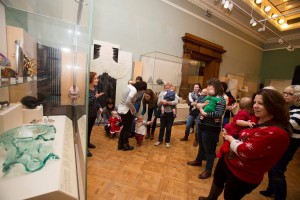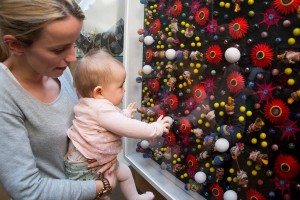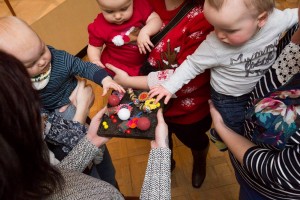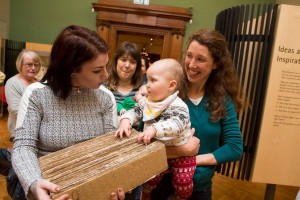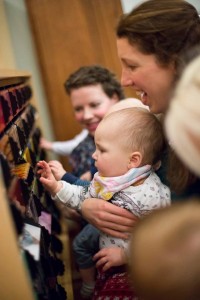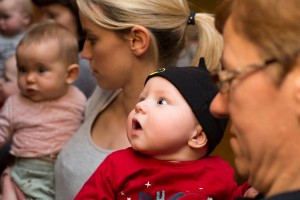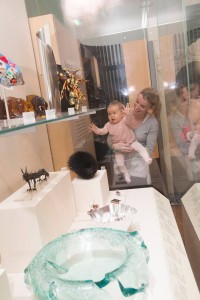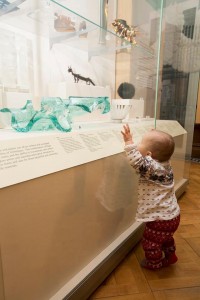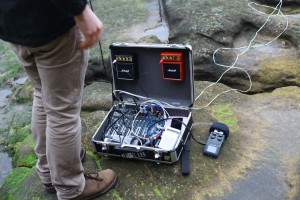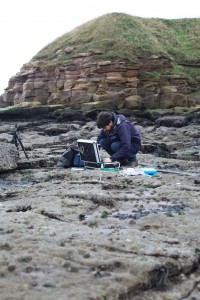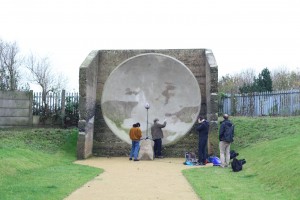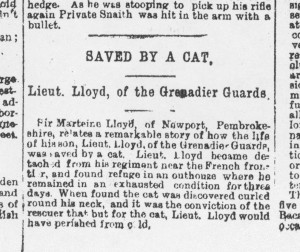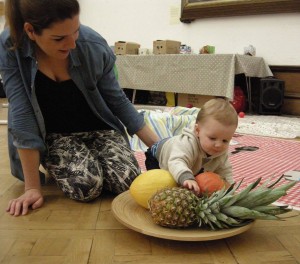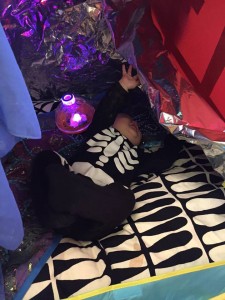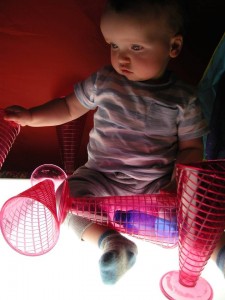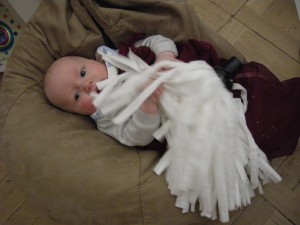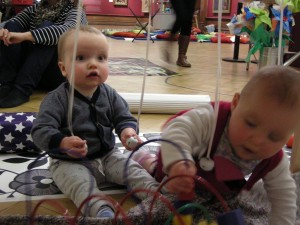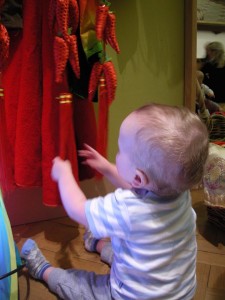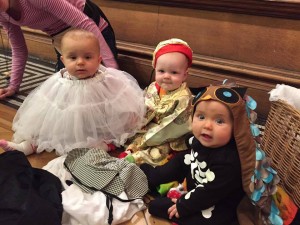The final Creative Baby! session of 2015 felt like a really positive one – partly because so many of the babies had reached developmental milestones that enabled them to get the most out of the tour; and partly because I was so delighted that the pilot phase was concluding on such a positive note, ready for more exciting developments in 2016!
The exhibition tour focused on Designs for Life, which showcases some of the Shipley’s nationally recognised craft and design collection. Over the course of the year we’ve focused on a different exhibition each session, presenting a diverse range of tour experiences; there’s been the hands-on knitted garden; Naomi Alexander’s paintings and paintings from the collection; Katharine Morling’s largescale ceramics; and for this session – craft objects mainly displayed in glass cases. This in itself presented new challenges for the tour, as many of the objects are small scale and displayed at a distance from the viewer, so at first glance it may not be the most baby-friendly. This tour proved an exciting opportunity to get some of the ‘handling collection’ out, allowing little fingers to explore artist-made pieces and samples of textile, glass and ceramic artwork.
We began the tour by looking and feeling our way along the exhibition title panel. Each letter of this display is made by a different North East-based maker, and it was a wonderful opportunity for the babies to get up close to examples of metalwork, woodwork, ceramics, textiles and glass.
During the tour we looked at Michael Brennand Wood’s ‘Cloned Immaculate’, whose contrasting colours and busy patterns were mesmerising for many of the babies. The opportunity to get hands on with an artist-made sample of the artwork enabled them to experience it in multi-sensory ways.
We also encountered a range of contemporary chair design, including one that was made from corrugated card. Having a chance to explore the textures of this material, and the sounds it makes when little fingers are run over it, provided another hands-on exhibition experience. Volunteer Jess (pictured below) circulated with the sample of corrugated card, chatting to the babies about the texture and qualities of the material – as you can see from the picture below, the little tour takers were fascinated.
Everyday materials proved equally enticing for the babies – we looked at a display of teapots and allowed little fingers to feel glazes of contrasting textures – here’s volunteer Lillian talking to one of the babies about the colour, texture and function of the teapot:
There were also interactive aspects of the exhibition to enjoy, which many of the parents hadn’t previously perceived as baby-suitable. We looked at the moodboard, which depicts images that have inspired artists, and makes a wonderful ‘clack-clack’ sound as it’s spun. The babies enjoyed playing with it and making their own colourful compositions by rearranging the images.
It was a delight hearing the babies respond in animated, vocal ways to the artwork. Some got up close and chatted to the artwork, others made expressive, whole-body movements when excited by a pattern or contrasting colour.
Perhaps the most gratifying moment was when, after the tour finished, this new walker made a beeline for the artwork that had been discussed, to have a closer look – proof that you’re never too young to enjoy an exhibition!
Photos: Mark Savage
